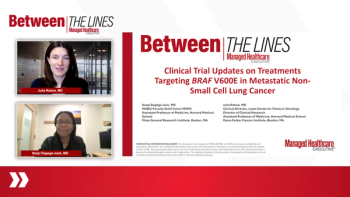
Defining and Recognizing Treatment-Resistant Depression (TRD)
Samuel Nordberg, PhD, discusses challenges with the definition and identification of TRD in the clinical setting.
Episodes in this series

I’m Dr Steve Levine, cofounder and non-executive chairman of the board of Heading Health in Austin, Texas, and senior vice president of patient access and medical affairs for COMPASS Pathways. Joining me in this discussion are my colleagues Dr Patricia Ares-Romero, vice president and chief medical officer of My Psychiatrist in Miami, Florida;. Ms Carrie Jardine, revenue cycle manager at Heading Health; Dr Samuel Nordberg, chief of behavioral health at Reliant Medical Group in Worcester, Massachusetts; and Dr Martin Rosenzweig, chief medical officer at Optum Behavioral Health in Philadelphia, Pennsylvania.
Today, our panel of experts will discuss the patient journey and unmet needs of patients with treatment-resistant depression [TRD], outline treatment strategies for TRD outside of oral antidepressants and antipsychotics, and explore strategies to support access to these alternative therapies through improved billing and coding strategies. Thank you, and let’s begin.
For many people with major depressive disorder [MDD], oral antidepressants play a valuable role. But sadly for some, standard medications provide little to no relief. Starting with you, Dr Nordberg, can you talk a bit about what the typical patient journey looks like as they may progress from MDD to TRD? At what point would we consider someone with MDD to have TRD?
Samuel Nordberg, PhD: Thanks, Steve. I’m excited to be here. I’m going to speak from the perspective of a care delivery organization, where the majority of the work identifying and managing behavioral health is done in primary care via a large integrated primary care behavioral health system. Reliant Medical Group operates a system with about 70 licensed clinicians embedded in and working alongside primary care. When we try to identify treatment-resistant depression, we immediately run into a number of the roadblocks that I imagine we’ll be talking about for the next couple of hours.
Treatment-resistant depression is by its very nature a depression that doesn’t seem to respond to the usual treatments that we’d throw at it for frontline interventions. Typically, in a naturalistic setting, you’d identify treatment-resistant depression after multiple trials of different medications and psychotherapies—whatever you have available within your system—when you observe them not achieving the desired effect with that patient.
However, that simplistic explanation often isn’t what we see when we operate in primary care, where patients often come to us from other settings. It may be the first time we’re seeing them, but they’ve already failed multiple attempts at intervening. We’re getting to them for the first time and trying to identify whether this is somebody worth throwing into yet another trial of a medication, yet another relatively straightforward standard behavioral intervention, or whether we can use the data that we’ve already collected about this person to identify whether this is somebody who likely needs an alternative form of treatment to address what’s going on with them. That differential is challenging to do in a naturalistic setting. Let me stop there.
Steven Levine, MD: You hit a couple of important points there. Thank you. Number 1 is that while there’s this regulatory definition and a fairly standardized definition of the lack of response to at least 2 treatments within a current episode of adequate dose and duration. Sometimes having a precise understanding of what constitutes that for a given patient can be difficult. If you’re not the doctor who prescribed that treatment leading in, we might not know how adequate that dose and duration may have been. There’s also a bit of fiction around this bright-line separation in between episodes. For many of our patients, these can be quite chronic conditions, so it can be challenging.
Transcript edited for clarity.
Newsletter
Get the latest industry news, event updates, and more from Managed healthcare Executive.

